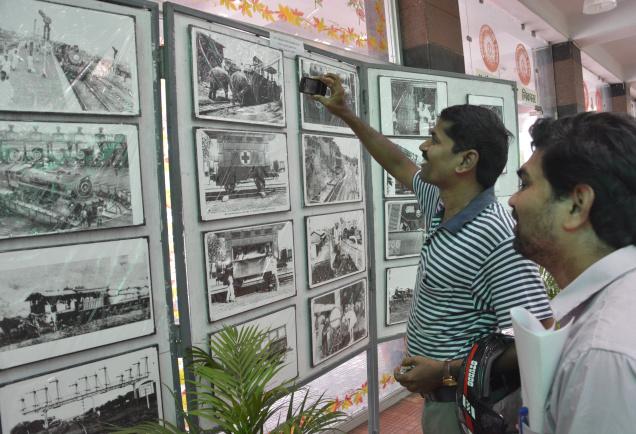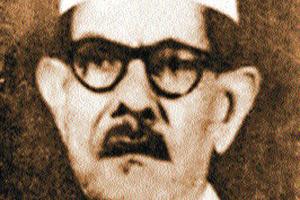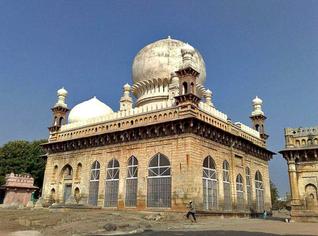Hyderabad :
The Air Force Station at Begumpet was one of six heritages of the city to be acknowledged with an award by the Indian National Trust for Art and Cultural Heritage (Intach) on the occasion of World Heritage Day 2014. The event brought into focus little known facts about Hyderabad’s history, including the city’s pioneering efforts in the field of aviation which commenced in 1911 when a Belgian aviator, Baron de Caters, along with his assistant Jules Tyck, arrived with a fleet of planes to give demonstration at the Secunderabad Parade Ground.
The three-day affair received wide publicity and drew large crowds of onlookers including quite a few women. A newspaper report preceding the event announced that “a popular society lady will be taken up by the Baron on the first day”. Unfortunately the identity of this enigmatic passenger remains unknown and it is believed that it must have been a member of the European community then living in the cantonment.
The first direct association of Hyderabad with aviation was established a few years later when during World War I, a British pilot challenged the enemy while flying an aircraft bearing the name of ‘Hyderabad’ over the skies of Germany in 1917. In recognition of contributions to the Imperial war effort, the names of native states had been inscribed on the aircraft of ‘Gift Squadrons’ raised and maintained with funds donated by the Indian rulers. Subsequently, the British formed two more Hyderabad Squadrons during World War II with public contributions raised at Hyderabad, and the Spitfires and Hurricanes of these units had the legend “Presented by His Exalted Highness, the Nizam of Hyderabad” emblazoned on their fuselage. Among the three Hyderabad Squadrons of the Royal Air Force, the 152nd had the Nizam’s crown, the distinctive ‘dastar’, displayed prominently on its insignia.
The credit of introducing Hyderabad to flying as a hobby goes to two adventurous youngsters, Babar Mirza and Pingle Madhusudhan Reddy, who developed a keen interest in flying while pursuing their studies in England. While Reddy managed to keep his passion for flying in check long enough to obtain a degree in mechanical engineering from Leeds, Mirza concentrated more on developing an expertise in handling aircraft. Reckless by nature, he purchased a Simmonds Spartan and set out from Croydon in late 1932 with the sole obsession of reaching Hyderabad within the shortest possible time despite his father having explicitly banned him from undertaking such a “perilous and foolish adventure”. Without giving a second thought to the logistics involved in undertaking such an arduous journey and despite refusal of permission to transit Turkey, Mirza successfully bluffed his way out of tricky situations including some perilous moments at Konya where he inadvertently landed on a military parade ground and was promptly marched off at gunpoint! Unable to take the punishment of the “Air Mad” Hyderabadi anymore, the plane’s engine gave way over the Iraqi desert. Rescued by Bedouins, he was packed off to India along with the wreckage of his aircraft.
Within a year of the mishap, Babar Mirza had somehow convinced his father Manzoor Jung to support his plans of establishing an Aero Club at Hyderabad. Laying out a landing strip on the polo ground of the family estate at Habsiguda, he flew in the now restored Spartan from Karachi and applied to the Nizam’s government for permission to start a private Flying Club and ordered another aircraft from London. Meanwhile Reddy, having purchased an Avro Avian in England in 1933, flew it to Hyderabad and touched down at Habsiguda to join the Deccan Aero Club. Official permission still pending, Babar Mirza took it upon himself to garner support and went about it in a unique way. Inviting the then Prime Minister of Hyderabad Maharaja Kishen Pershad and other elite to Habsiguda for an evening of flight demonstrations, he put on a show that they would never forget. After his colleagues had shown their skills in performing ‘loops’ and ‘rolls’, Mirza swooped down low over the heads of the visiting dignitaries creating ‘quite a sensation’! The dare seems to have had little effect on the administration as it was another three years before the Hyderabad State Aero Club was formally inaugurated in 1936. Mirza’s antics though, seem to have set a precedent for disgruntled aviators. Old-timers of the city narrate the exploits of another pioneer, a scion of the Bilgrami family who, jilted by his beloved because of a stubborn refusal to give up his ‘dangerous’ passion for flying, made repeated low passes over her wedding venue; blowing away the shamiana, scattering the guests and turning a lavish spread inedible with a coating of dust!
(This is the first of a two-part series on Hyderabad’s aviation. The writer is a heritage activist)
source: http://www.timesofindia.indiatimes.com / The Times of India / Home> City> Hyderabad / by Sajjad Shahid, TNN / April 27th, 2014
____________________________________________________________________________________
PM Reddy: An aviator and engineer par excellence
The founding of the Hyderabad State Aero Club ushered in an era of relative decorum and the unchecked exploits of buccaneering aviation pioneers of the city were finally tamed to a large extent. Over succeeding years Babar Mirza and P M Reddy, matured into serious aviators who took on the task of ensuring that aviation in the Deccan kept pace with international trends. Their enthusiasm for flying inspired others to take up the hobby and also hastened the plans of the Nizam’s government to establish an airline. Aban Pestonji Chenoy, the teenaged daughter of the Nizam’s Mint Master, became the first woman member of the Hyderabad State Aero Club to qualify for an aviator’s license in 1938, a year in which 55 of the club’s 70 members were Indians.
The club’s operations were suspended during World War II and its pilots, aircraft and facilities were commandeered for use by a training squadron. The association of Begumpet with the Air Force has continued ever since. The acute need for pilots during the war resulted in the establishment of a center of the Indian Air Training Corps on the Osmania University campus in 1945. Trained by Hyderabad’s own pilots along with British officers, cadets of the very first batch passing out from the Osmania University made such a strong impression on the recruiting board that a majority of them were recommended for a commission in the Air Force.
Princess Durru Shehwar laid the foundation stone for the passenger terminal at Begumpet in 1936 as part of the Nizam’s Silver Jubilee celebrations and Deccan Airways Limited was incorporated in 1945, becoming the first airline to be promoted by a native State. A joint venture of Hyderabad State and Tata Airlines, Deccan Airways had a fleet of a dozen Douglas DC-3 ‘Dakota’ aircraft when Hyderabad was absorbed into the Indian Union in 1948.
It was with Pingle Madhusudhan Reddy’s encouragement that the last Nizam, Mir Osman Ali Khan, first boarded an aircraft for a sortie over the city intended to check out his reactions to flying. Initially thrilled at being able to view from the skies, the Nizam is said to have later issued orders prohibiting any aircraft from flying over his palace. On one of his later flights in a twin engine aircraft, he enquired from PM as to what would happen if an engine conked off during flight. “Not a problem Your Exalted Highness”, PM replied, “We can safely carry on with the remaining engine”.
Years later when boarding a flight for Delhi, he pointed to the four engines of the Super Constellation and exclaimed; “Now that is what I call a safe aero-plane!”
By 1947 Deccan Airways had a fleet of sturdy Douglas DC-3 ‘Dakota’ aircraft which connected Hyderabad with key cities through regular services. Apart from scheduled flights, the airline also took on charters and diplomatic sorties on behalf of the Nizam and his government. The airline continued to serve the ruler of Hyderabad in his capacity as the Rajparmukh subsequent to merger and one of the tasks personally supervised by PM was to ensure a daily supply of fresh water for the Nizam during his sojourns away from Hyderabad. Drawn from a protected source which had supplied his ancestors, the waters of the Bam Rukn-ud Dowlah, a spring near the Mir Alam Tank, were shipped under guard in special sealed containers for the Nizam and his family.
Pingle Madhusudhan Reddy saw the airline through its most difficult phases of existence including a ban imposed by the Indian government just prior to the Police Action and later when Deccan Airways along with all other private airlines of the country, was nationalized in 1953 becoming part of the Indian Airlines Corporation. Having been appointed the first Operations Manager of Deccan Airways in 1945, he rose to become its General Manager and later Managing Director. Under his dynamic leadership Deccan Airways gained the reputation of being one of the best and the most efficient airlines in the country. Despite being named Regional Director of Indian Airlines, PM resigned and opted to revert to Hyderabad State service in 1954 and was put in charge of the Industrial Trust Fund and its operations; Praga Tools and Hyderabad Asbestos which was eventually handed over to the Birlas. At the request of the defense ministry, PM was released from state service and took charge of HAL Bangalore in 1957 to set up the jet engine factory from where he retired in 1967. After a long and eventful life PM passed away in Hyderabad in 1986.
(This is the second and concluding part of the column on pioneers of aviation in Hyderabad. The writer is a well known heritage activist)
source: http://www.timesofindia.indiatimes.com / The Times of India / Home> City> Hyderabad / by Sajjad Shahid, TNN / May 04th, 2014







